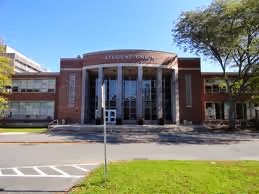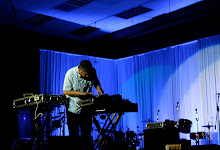VISUAL CLAVE
The Evolution Of Salsa Graphics And
The Expression Of Latino Identity
Through Album Cover Art
Student Union Art Gallery, in the Student Union Building, UMass Amherst Campus, Amherst MA
Opening Thursday, February 27, 2014
5:00 PM -7:30 PM
5:00 PM -7:30 PM
(feturing DJs spinning vintage Latin vinyl)
Dance Party with Jesús Pagán and his Conjunto Barrio 8:00 PM Cape Cod Lounge (next to the art gallery) All events: FREE, open to the public
(bring your family!)
(bring your family!)
Visual Clave proposes that the album
cover is not only an invitation to dance but is also fine art worthy of serious
consideration. The exhibition’s premise is that the record jacket is not just
an ephemeral mass-produced object to be relegated to the trash heap of a bygone
era, but rather a unique 12 by 12 inch window onto a culture's soul.
Through
the premise of this proposal, Visual
Clave explores the evolution of Latin music album cover art over the last
50 years, paying critical attention to issues of identity and aesthetics, with
an emphasis on historical context and the unsung artists who helped present
Latin music — and its attendant socio-cultural themes — to the world. The
concept of “clave” is essential to understanding Afro-Antillean popular music
forms and the dance culture that surrounds it; it is the 2-3 or 3-2 beat used
in all genres from the Cuban son to the Dominican merengue. It is this
fundamental cultural essence, with its roots in Afro-Caribbean culture, that Visual Clave picks up on, offering
a unique way of studying the evolution of attitudes and notions of culture,
race, ethnicity, gender, and sexuality through the graphic presentation of
Latin music in both domestic and international markets. Themes of
transnationalism, social justice, immigration, civil rights, sexism, and racism
will raised through the presentation of album covers specifically chosen to
inspire debate and reflection. Some well-loved examples of Latin LP jacket
design will be sure to inspire feelings of nostalgia in older viewers who might
have collected or danced to the music 'back in the day", but other covers
will speak to universal concerns that require no cultural allegiance or prior
knowledge of Latin music. In addition, examples of covers chosen purely based
on the merit of their design aesthetics alone.
A gallery of rare 1940s and 1950s 78 RPM and 10 inch LP
album jackets featured in the show
album jackets featured in the show
Many
of the album covers on display have fascinating stories behind their creation.
Taking inspiration from Pablo Yglesias’ book Cocinando, 50 Years of Latin Album Cover Art, this exhibition aims
to tell these stories through the display of multiple album covers that trace
the history from 1930s and 40s 78 RPM album jackets through the “golden era” of
the 1960s and 70s vinyl LP cover to today's digital era where even Latin CD
covers can be innovative, and vinyl is experiencing a new vogue. There will
also be a unique opportunity to see original artwork that was used for some of
the most well-known and beloved salsa albums of the 1970s, ranging from
paintings and illustrations to photography and sculpture.
Once
the Latin music industry in New York was taken over and run largely by Latinos
in the 1960s and 70s, the visual presentation of salsa became more of a
"Latin thing" and that is when the level of design really began to
reflect some of the themes mentioned above. The viewer will become familiar
with the mainly New York-based designers from this era, and will learn the
names of the graphic artists who labored largely behind the scenes or in
obscurity: Chico Alvarez, Ely Besalel, Warren Flagler, Pam Lessero, Ron
Levine, Lee Marshall, Abel Navarro, Charlie Rosario, Yogui Rosario, Izzy
Sanabria, Manny Vega, Jorge Vargas, Angelo Velázquez, Walter Velez,
and others. The show will include actual original work by some of these pioneers
of salsa graphics.
Student Union Building, UMass Amherst
Gallery programming is made possible by generous funding from The Student Government Association (SGA) and the Graduate Student Senate (GSS), and through UMass Arts Council grants and an ECSA (Engage, Connect, Serve, Achieve) grant. ECSA Grants are funded by the CSD and the Division of Student Affairs & Campus Life. Also, with generous help from WMUA and station advisor Glenn Siegel.





